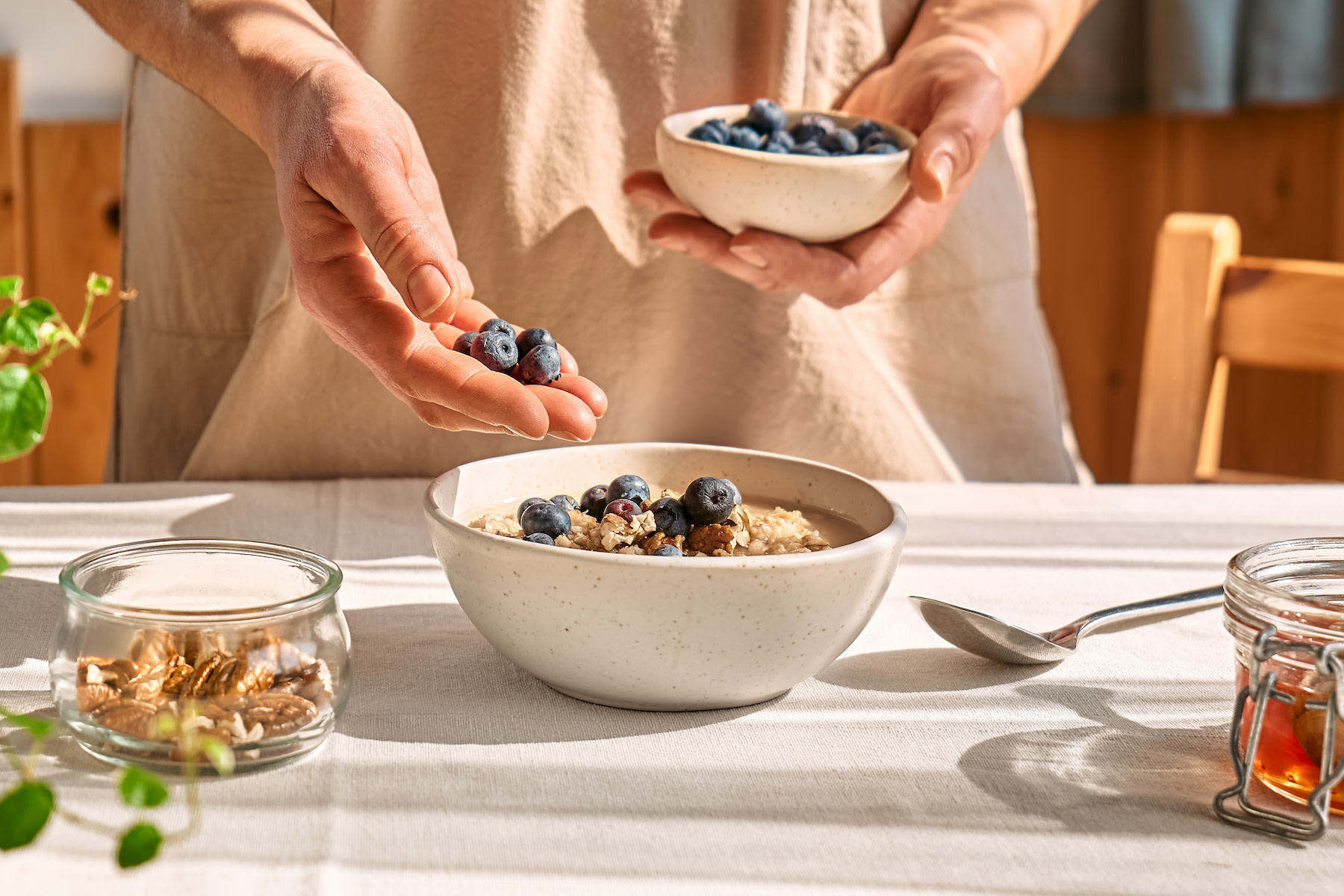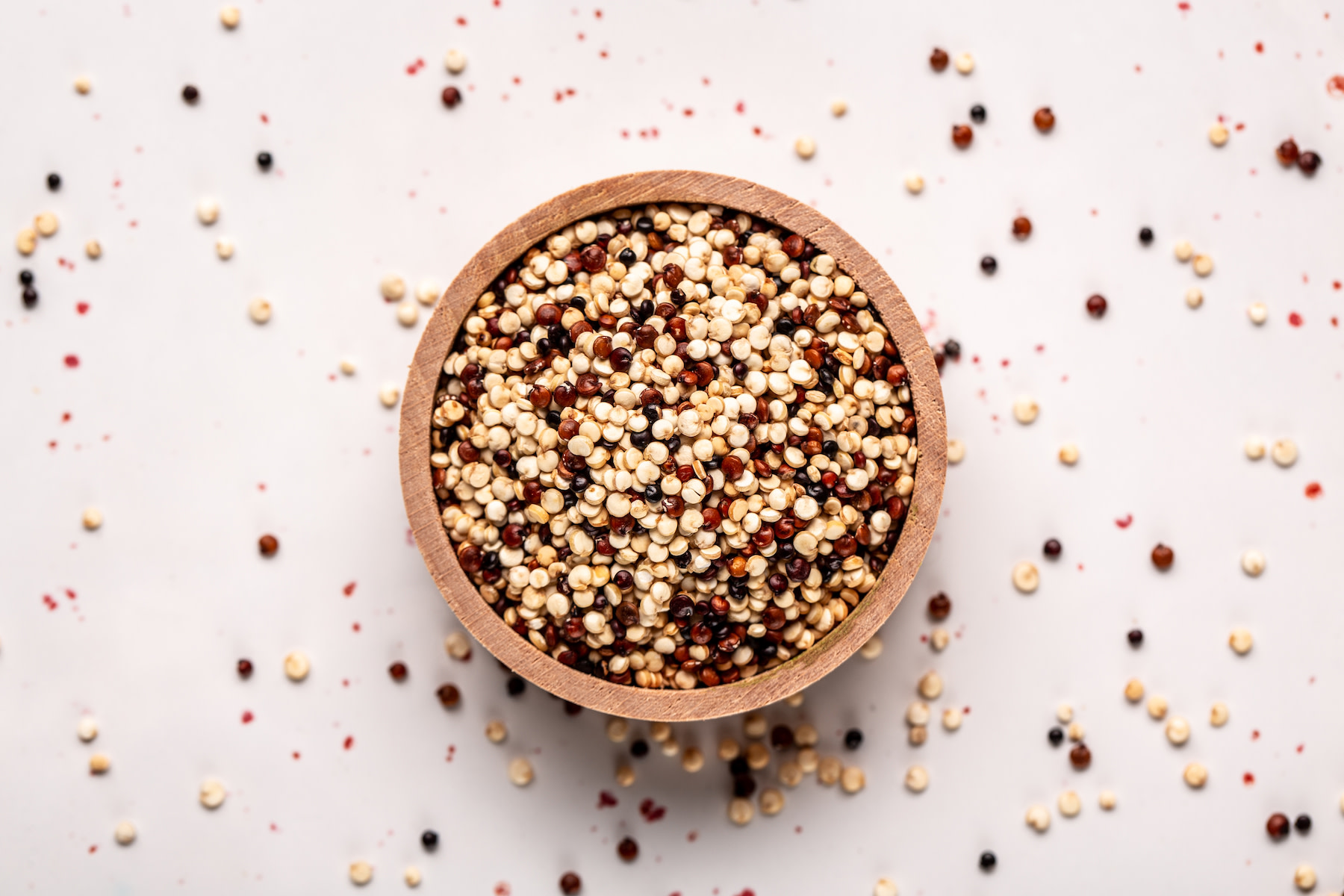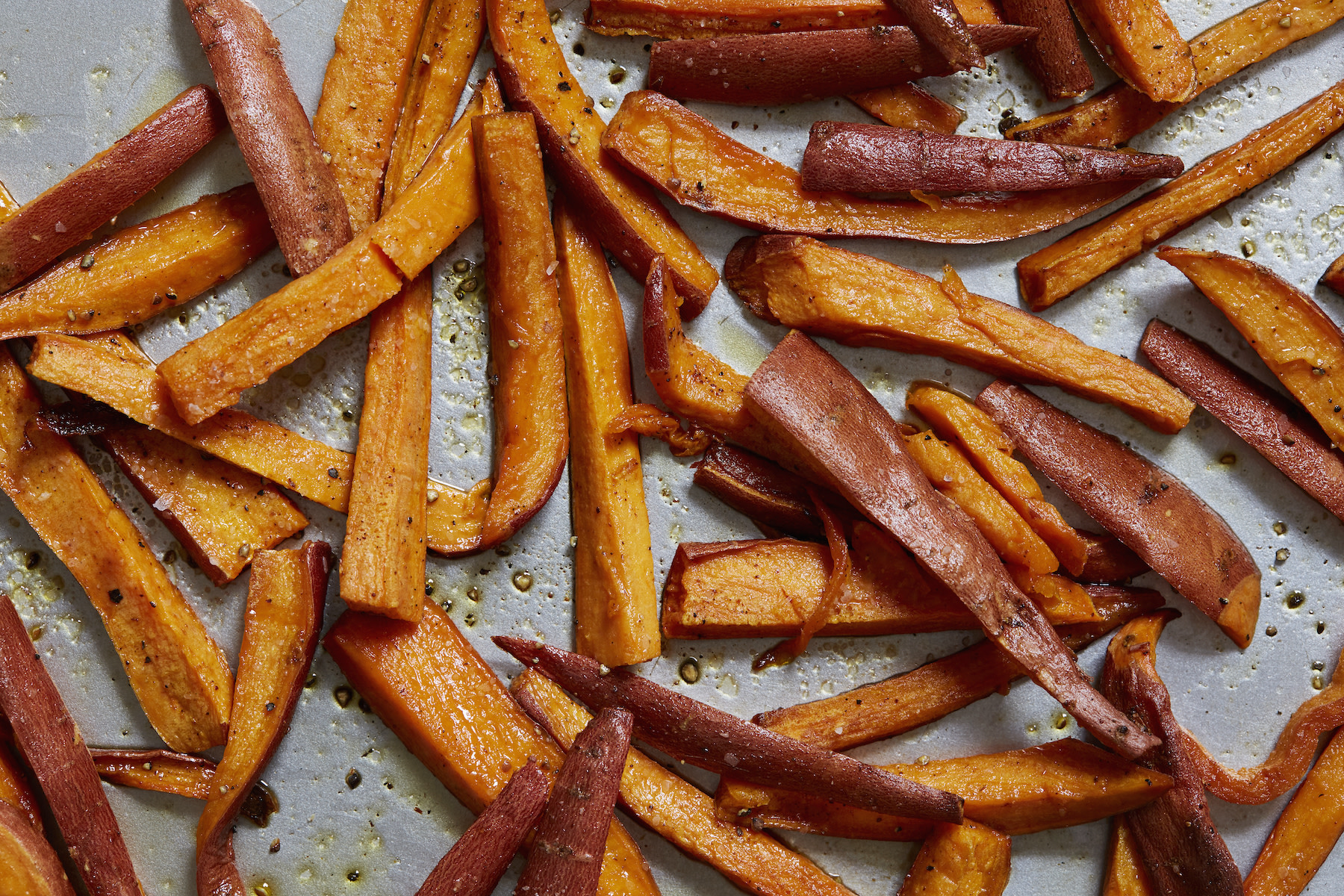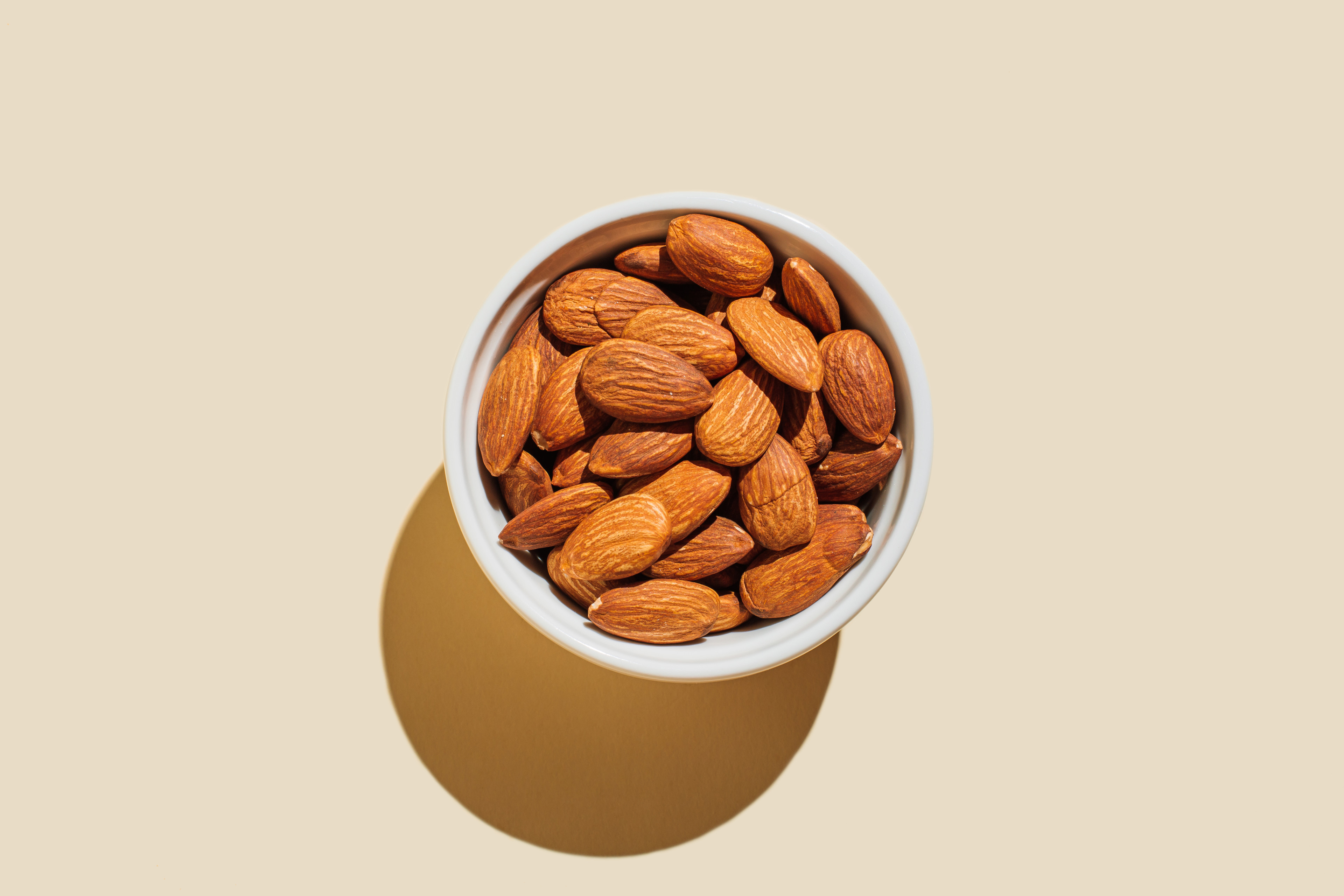
Ekaterina Fedulyeva / iStock / Getty Images Plus via Getty Images
7 High-Fiber Foods to Add to Your Plate ASAP
These fiber-rich foods serve up a host of benefits for your body.
By Jessica Migala•
What Is Fiber?
Benefits of Fiber
How Fiber Supports an Active Lifestyle
7 High-Fiber Foods to Load up On
How Much Fiber Do You Need Every Day?
Tips for Incorporating High-Fiber Foods Into Your Diet
The Takeaway
Fiber is the unsung hero of a healthy diet. This superstar food component plays a key role in everything from digestive health to blood sugar stabilization—and eating enough high-fiber foods is an important part of fueling your body for exercise and everyday life alike.
Discover more ways to reach your goals with Peloton
That said, there are a few important considerations to keep in mind when eating high-fiber foods, especially before working out. We talked to registered dietitians specializing in sports nutrition to break down what you need to know about fiber, its benefits, the best high-fiber foods to fuel an active lifestyle, and smart ways to make sure you’re getting enough.
What Is Fiber?
Fiber is a type of carbohydrate that can’t be digested, according to the National Institutes of Health (NIH). That means that unlike with other carbs, fats, or proteins, it passes through your body relatively intact rather than being broken down and absorbed. Fiber is also only found in plants, not animal sources like meat or plain dairy.
There are two main types of fiber: soluble and insoluble. Plant foods contain a mixture of the two types, but some are better sources than others. Here’s a quick breakdown of soluble vs. insoluble fiber:
Soluble fiber forms a gel when mixed with water to slow digestion, which helps keep your blood sugar under control, according to the NIH. Soluble fiber also latches onto cholesterol and helps ferry it out of the body, which is why it’s been shown to help lower “bad” LDL cholesterol levels, per the National Lipid Association. You’ll find soluble fiber in whole grains like oatmeal and quinoa, beans, avocados, chia and flax seeds, broccoli, Brussels sprouts, sweet potatoes, green peas, apples, and bananas.
Insoluble fiber adds bulk to your stool, allowing it to readily and comfortably move through your digestive system, per the NIH. You’ll find insoluble fiber in foods like whole grains, beans, and root vegetables.
Benefits of Fiber
To put it simply, fiber is really, really good for you. Here’s just a sampling of what it can do:
Improves GI Health
If you want a healthy gut, you need fiber. “Fiber plays a vital role in promoting gut health by assisting in digestion and transporting nutrients more efficiently,” explains Leah Reitmayer, RD, a sports dietician and owner of Lettuce Eat Dessert. Fiber not only moves things along to help keep you regular, but it also feeds the “good” bacteria in your gut. And a healthy gut microbiome plays an important role in things like immune function and digestive health.
Manages Blood Sugar Levels
Given fiber can help slow digestion, it makes sense that it helps mitigate the normal increases in blood glucose levels after eating as well. This can help you maintain sustained energy throughout the day, Reitmayer says—something that can translate into your workouts, too.
Keeps You Feeling Fuller for Longer
High-fiber foods are filling. (You can witness this first-hand after piling veggies onto your plate at a meal.) Because fiber can't be digested, it moves slowly through your system and keeps you feeling full for longer, points out the Centers for Disease Control and Services (CDC). High-fiber foods also tend to be low in calories while still adding bulk, which can help those with weight management or weight loss goals.
Lowers the Risk of Diseases
Those with high-fiber diets may be at a lower risk of developing heart disease, diabetes, and diverticular disease, according to experts at the Harvard T. H. Chan School of Public Health. What’s more, a 2019 Lancet review of 185 studies and 58 clinical trials suggets that those with higher fiber diets are less likely to die from heart disease and cancer.
How Fiber Supports an Active Lifestyle
Fiber by itself won’t give you energy, but the foods it’s wrapped up in will. “For active groups, especially if you’re doing some high-intensity workouts, you will naturally burn a lot of carbohydrates,” says Lauren Antonucci, RDN, a sports dietitian and owner and director of Nutrition Energy. “These carbohydrates provide fuel; it’s how our bodies were designed. If you want to exercise in this way, it’s helpful to provide your body with what it needs and consume healthy carbohydrates.” And you can get these fueling carbs from high-fiber foods.
That said, there is a caveat: Experts recommend against eating high-fiber foods right before a workout since they take longer to digest and can cause digestive distress while you’re exercising. “These aren’t the foods to eat an hour before hopping on the bike or going out on a run,” Antonucci says. Instead, you might have a bowl of oatmeal for breakfast if you’re working out at noon, or dig into a bowl of lentil soup after exercising.
So, consider when you need the energy. If it’s for a slow and sustained release of blood sugar that keeps your energy up over time, then high-fiber foods it is. But if you need energy stat because you’re working out soon, focus on fast-acting carbs like a banana or crackers that have less fiber, Antonucci says. And remember, that’s OK—you don’t always have to make the high-fiber choice. “Not all foods serve all purposes,” Antonucci adds.
Ultimately, think of fiber-rich carbs as your foundation, but hone in on more simple sources of carbohydrates soon before a workout. And finally, know that while fiber itself doesn’t aid in workout recovery, the other nutrients included in high-fiber foods will, adds Antonucci.
7 High-Fiber Foods to Load up On
Want to prioritize more fiber in your diet, but aren’t sure where to begin? Here are a few high-fiber foods to add to your grocery list:
1. Oats

Nora Carol Photography / Moment via Getty Images
Grab a spoon and dig in. “Oats provide complex carbohydrates for sustained energy,” Reitmayer says. One-third of a cup of dry oats offers about 3 grams of fiber, according to the USDA. What’s more, oats have a type of soluble fiber called beta-glucan, which has been shown to reduce cholesterol, studies suggest. Other research in Antioxidants in 2021 found that eating oatmeal two hours prior to a high-intensity workout blunted free radical production caused by exercise, likely due to antioxidant compounds called avenanthramides.
2. Quinoa

Koval Nadiya / iStock / Getty Images Plus via Getty Images
Reitmayer likes quinoa, a grain-like seed, because it offers both complex carbohydrates (about 40 grams per cup) and protein (about 8 grams per cup), according to the USDA, making it a multitasking whole grain that’s a solid source of fiber—roughly 5 grams per cup.
3. Berries

Hanan Isachar / Corbis Documentary via Getty Images
Whether you like strawberries, blueberries, raspberries, or blackberries (or all of the above), berries pack free-radical-quelling antioxidants and fiber, Reitmayer says. In fact, one cup of raspberries has 8 grams of fiber, per the USDA. Overall, they’re little powerhouses for your health, packing powerful antioxidant compounds called polyphenols that are good for your heart, immunity, and GI and nervous systems, concludes a 2022 review in Molecules.
4. Leafy Greens

Martin Barraud / OJO Images via Getty Images
Leafy greens like spinach, collards, chard, and lettuce contain nitrates, which are compounds shown to improve measures of athletic performance like endurance, according to a 2021 review and meta-analysis in the Journal of the International Society of Sports Nutrition. Nitrates are turned into nitric oxide, something that helps dilates blood vessels to improve blood flow, which may send more oxygen to working muscles.
Another perk: Eating fruits, vegetables, and exercising has been linked to higher life satisfaction, concludes a paper published in the Journal of Happiness Studies in 2021. Sure, this applies to any fruit or veggie, but leafy greens are an easy one to tuck into a variety of foods, like pasta, omelets and scrambled eggs, stir-fries, smoothies, and more. Think of them as a good way to sneak more veggies (and fiber) into your diet.
5. Beans and Lentils

Tanja Ivanova / Moment via Getty Images
Beans and lentils are a high-fiber food source of protein and carbohydrates alike. For instance, a half cup of black beans or lentils each have an impressive 8 grams of fiber. Beans are low on the glycemic index, meaning they don’t spike blood sugar, are chock full of fiber, and have plant proteins, all of which keep you full.
6. Sweet Potatoes

Winslow Productions / Tetra Images via Getty Images
These spuds are another winning source of complex carbs, says Reitmayer. In a 2021 systematic review in Movement & Sport Sciences, researchers concluded that consuming sweet potato products supported cardiorespiratory health as well as physical activity and recovery. What’s more, a cup of sweet potatoes offers up 4 grams of fiber.
7. Almonds

Tanja Ivanova / Moment via Getty Images
With 3.5 grams of fiber in a 1-ounce serving, almonds deliver a solid source of fiber to your diet. They’re also a winning snack for exercisers. Recent research published in Frontiers in Nutrition studied 64 adults who ate about two ounces of almonds daily or a cereal bar for four weeks prior to 90 minutes of strength-based exercises. The almond eaters experienced less post-exercise inflammatory muscle damage and reported less fatigue and more strength during recovery compared to those who ate the cereal bar. Almonds pack a polyphenol called proanthocyanidins that may, in part, be responsible for the post-workout boost.
How Much Fiber Do You Need Every Day?
The amount of fiber you need daily largely depends on your age and biological sex. Here are the fiber intake guidelines to shoot for, according to the USDA’s Dietary Guidelines for Americans 2020-2025:
Men, ages 19–30: 34 grams per day
Women, ages 19–30: 28 grams per day
Men, ages 31–50: 31 grams per day
Women, ages 31–50: 25 grams per day
Men, ages 51 and above: 28 grams per day
Women, ages 51 and above: 22 grams per day
Unfortunately, most people don’t get that amount. More than 90 percent of women and 97 percent of men don’t meet their recommended fiber intake, according to the USDA.
For some exercisers, that’s deliberate. In a study on 388 runners, nearly one-quarter said that they regularly avoided high-fiber foods—especially those who were running long distances—due to GI distress associated with these foods, per research in the Journal of the International Society of Sports Nutrition in 2020.
On the other hand, some folks wind up eating too much fiber. “I see both sides in my practice,” Antonucci says. If you’re a highly active athlete, then your calorie and carbohydrate needs are larger—but you don’t need more fiber. That’s why it’s important to balance both low- and high-fiber foods in your diet.
For that reason, it’s important to follow expert recommendations for incorporating high-fiber foods into your diet (like the ones below), which will help you reach the amount you need while limiting any unpleasant side effects from these good-for-you foods.
Tips for Incorporating High-Fiber Foods Into Your Diet
When you know you need to get more fiber into your diet, here are some smart strategies to make it happen:
Focus on Fiber Diversity
Even though we have seven great high-fiber foods on our list above, you definitely don’t need to stop with that selection. There are many more choices you can include in your diet, so find the fruits, vegetables, whole grains, and legumes that you enjoy and focus on those. Eating a diverse selection of fiber-rich foods also ensures that you’re eating enough of both soluble and insoluble fibers. “If you’re eating a wide variety of plant foods, you have a much better chance of eating enough fiber,” Antonucci says.
Make Sure Your Plate Has One or Two High-Fiber Foods
When you sit down for a meal or snack (that’s not being eaten right before a workout), look at what you have on your plate. Can you identify one or two foods that have a decent amount of fiber, Antonucci asks? No need to look up the exact amount of fiber they contain—rather, look and see if they’re fruits, vegetables, legumes, nuts, seeds, or whole grains. Breakfast of oatmeal and berries? You’re good on fiber. Breakfast of only egg whites and turkey bacon? Fiber is needed. Toss a fruit on your plate, scramble some spinach into those egg whites, and you’re good to go.
Mind Your Digestion
When you eat too much fiber or ramp up your fiber intake too quickly, you might notice some not-so-pleasant GI distress as a result. If you’re noticing gas and bloating, that may be an indication that you’re consuming too much fiber or that you’ve started adding more of these high-fiber foods into your diet too abruptly, Antonucci says. Slowly increase the amount of fiber you’re eating to give your digestive system a chance to adjust.
“Although it’s important to increase fiber in your diet, it is essential to increase fiber slowly,” Reitmayer says. “It is important to also remember when you increase fiber, increase water.” She likens fiber to powder cement: “The more water it contains, the more fluid the mixture is. Think of that in your gut—you want it to flow better instead of being packed in.”
One last pro tip: If you’re going to, say, work out after dinner, be sure to consume cooked veggies over raw, Reitmayer advises, which will be easier to digest. Meaning: You might want to go for grilled asparagus over a big salad if you plan to exercise after.
The Takeaway
Fiber is a non-digestible carbohydrate found in plant foods. Eating enough fiber is important for everyone, including exercisers, though most people fail to get the amount they need. Eating high-fiber foods that are rich in complex carbohydrates (such as oats, berries, beans, lentils, and nuts and seeds) will support your energy levels throughout the day. Increasing your fiber intake slowly and consuming fiber-rich foods with water will lessen digestive side effects, like gas and bloating, to ensure that your healthy diet makes you feel good, too.

Peloton App
Access thousands of classes with no equipment needed.
This content is for informational and educational purposes only and does not constitute individualized advice. It is not intended to replace professional medical evaluation, diagnosis, or treatment. Seek the advice of your physician for questions you may have regarding your health or a medical condition. If you are having a medical emergency, call your physician or 911 immediately.
This content is for informational and educational purposes only and does not constitute individualized advice. It is not intended to replace professional medical evaluation, diagnosis, or treatment. Seek the advice of your physician for questions you may have regarding your health or a medical condition. If you are having a medical emergency, call your physician or 911 immediately.
Level up your inbox.
Subscribe for a weekly dose of fitness, plus the latest promos, launches, and events.
By providing your email address, you agree to receive marketing communications from Peloton.
For more about how we use your information, see our Privacy Policy.





